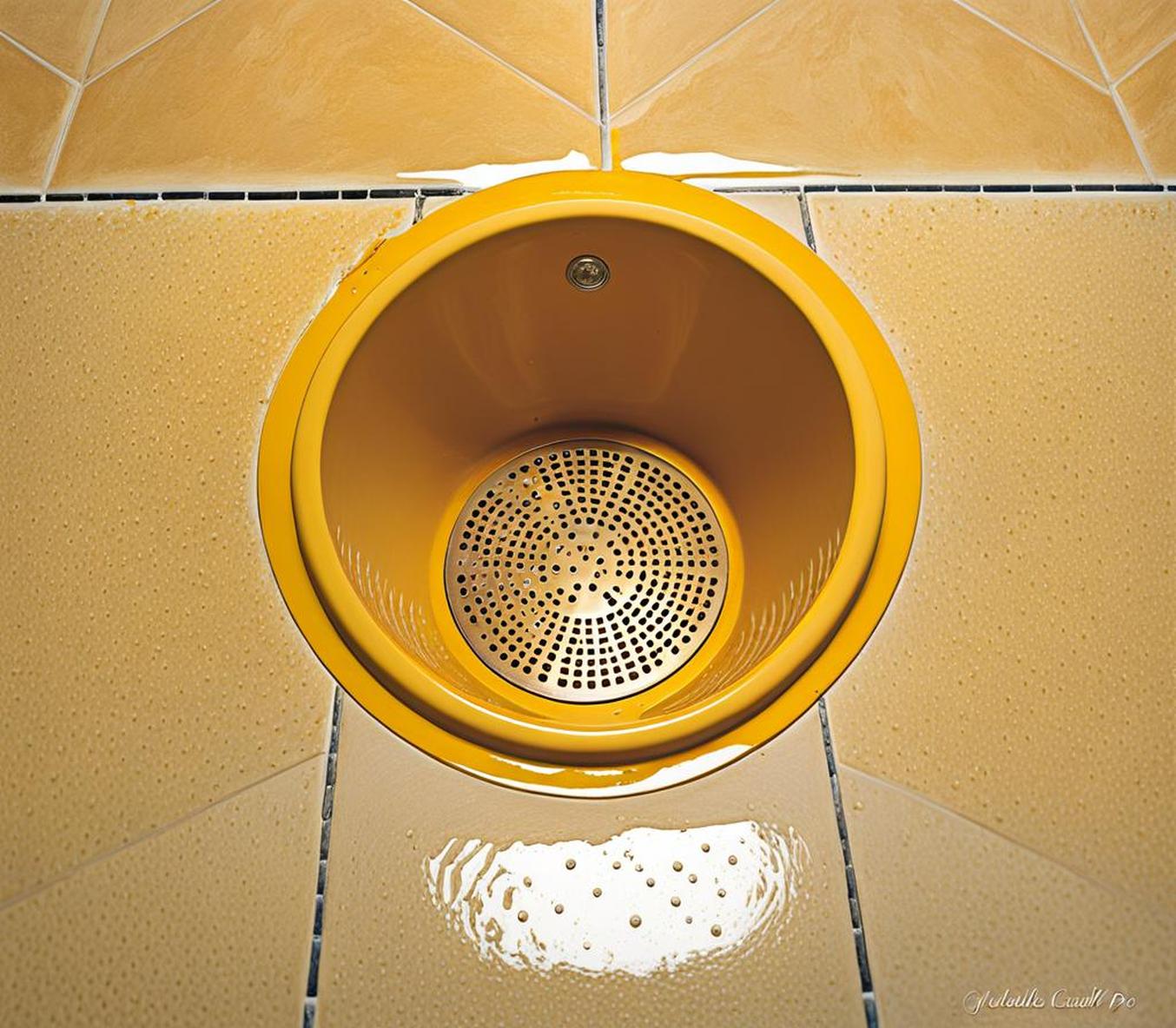Is your shower drain slowing to a trickle? Do you have to wait ages for the standing water to go down the plug hole after showering? If so, you likely have a calcium buildup problem.
Calcium and mineral deposits can accumulate in shower drains over time. This cement-like buildup is caused by hard water, and can completely clog your drain if left unchecked. Fortunately, removing calcium deposits and preventing future buildup is easy with the right techniques.
Signs You Have Calcium Buildup in Your Shower Drain
Here are the most common signs that calcium deposits have built up in your shower drain:

- Water drains very slowly
- Standing water remains in the shower tub after use
- Gurgling sounds come from the drain
- White or gray mineral residue around the drain
- Musty, damp smells coming from the drain
- Rust stains around drain fixtures
If you notice one or more of these symptoms, there’s a good chance you have a calcium clog in your shower’s plumbing. The good news is it can be removed with some simple techniques.
What Causes Calcium Buildup in Shower Drains?
There are a few key culprits behind calcium deposit buildups:
- Hard water – Water high in calcium and magnesium content
- Mineral accumulation over time
- Corrosion of old galvanized pipes
- High iron levels in water supply
Areas with hard water are most prone to calcium problems. As the mineral-rich water flows through your pipes, the calcium and magnesium settle and stick to the inside of drains. Over weeks and months, these deposits build up and eventually clog drains.
Corroding galvanized steel pipes also release iron that binds with calcium carbonate in the water. This forms an even thicker and challenging calcium deposit buildup.
Dangers of Calcium Buildup in Drains
If calcium deposits are allowed to accumulate, they can cause a number of headaches including:
- Fully clogged drains
- Damage to plumbing fixtures, pipes, showerheads
- Growth of mold, mildew and bacteria
- Rusting and corrosion
- Sewage backups
- Flooding risk
- Decreased water pressure
- Costly plumbing repairs
Catching calcium buildup early and removing deposits prevents these problems and saves you money in the long run.
How to Remove Existing Calcium Buildup
If your shower already suffers from clogged drains, there are several methods to break up calcium deposits and get your water flowing freely again:
Boiling Water
Pouring a pot of boiling hot water down your drain can help loosen and dissolve calcium deposits. The heat breaks up the minerals. Flush the drain with boiling water once a week to maintain it.
Baking Soda and Vinegar Treatment
Mix a cup of baking soda with a cup of vinegar and pour the fizzing mixture down your shower drain. The chemical reaction helps dissolve buildup. Let it sit for 30 minutes then rinse with hot water.
Citric Acid Cleaner
You can find citric acid products designed specifically for removing calcium, limescale, and rust from plumbing. Simply pour the cleaner down the drain and let it work for up to an hour before rinsing.
Remove Drain Cover and Scrub
Unscrew the drain cover and use a stiff drain brush to manually scrub away any calcium deposits lurking in your pipes. An old toothbrush also works.
Store-bought Chemical Removers
Hardware stores carry chemical drain cleaners made for dissolving mineral deposits, grease, and soap scum. Look for an environmentally-friendly calcium remover.
For severe clogs, call a professional plumber. They have tools to break through dense calcium deposits. A drain snake can also pull out large chunks of buildup.
Tips for Preventing Future Calcium Buildup
Prevention is the best medicine when it comes to calcium in shower drains. Here are tips to stop deposits before they start:
- Install a water softener – Softened water prevents mineral buildup.
- Flush weekly with hot water – Routine hot water flushing keeps drains clear.
- Use a drain cover/catcher – Catches hair and debris before it clogs drains.
- Clean weekly with baking soda – Removes soap scum before it hardens.
- Check weep holes – Ensure drainage weep holes are clear.
- Remove excess water – Use a squeegee after showering.
- Replace old pipes – Newer PEX or PVC pipes won’t corrode like galvanized iron.
Vigilantly maintaining your shower drain prevents calcium deposits from building up and causing clogs down the road.
When to Call a Professional Plumber
DIY calcium removal has its limits. Call a professional plumber if you experience:
- A completely clogged or backed up drain
- Extensive mineral deposits
- Rust around fixtures
- Persistent foul odors from drains
- Multiple plumbing issues
Licensed plumbers have commercial-grade tools, like augers and high-pressure jetters, capable of cutting through dense calcium obstructions. They can also inspect your pipes for damage and identify underlying issues causing recurrent clogs.
Hard water mineral deposits can gradually accumulate in shower drains, resulting in annoying clogs and plumbing headaches. Removing existing calcium buildup involves treatments like boiling water, chemical cleaners, manual scrubbing, or calling a plumber for severe blockages.
Preventing future calcium buildup is key. Make maintenance like drain covers, pipe cleaning, and water softeners part of your regular bathroom routine. A shower drain free of calcium debris, rust, and soap scum will keep water flowing freely down the drain.
